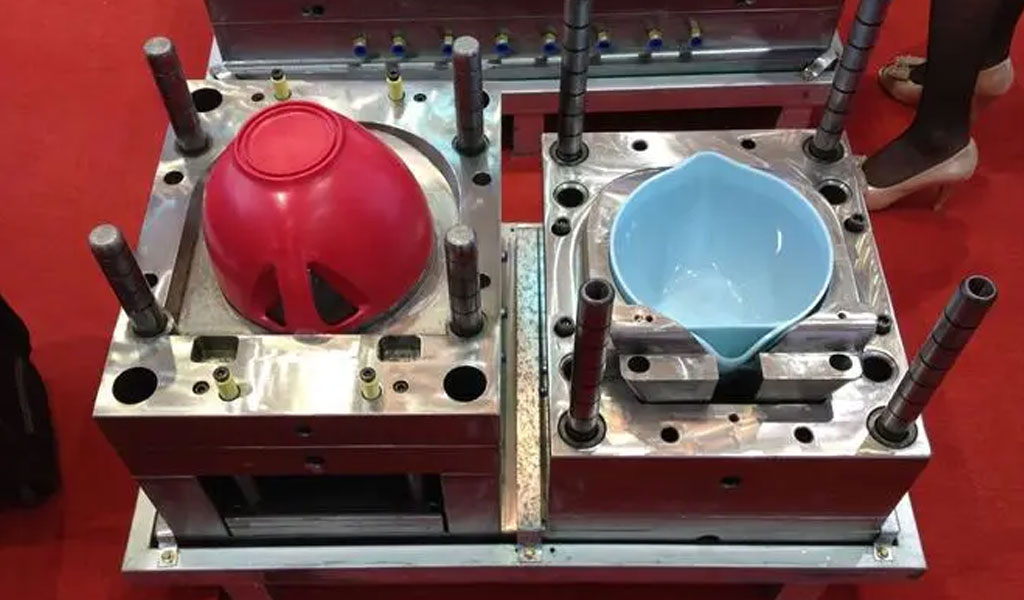
Injection molding is a widely used manufacturing process for producing parts by injecting molten material into a mold. This process is predominantly used for plastics, although metals, glasses, and other materials can also be molded. The injection molding process is crucial in the mass production of various products, ranging from automotive components to consumer electronics.
Understanding the costs involved in injection molding, including the price of the injection molding process itself, the cost of molds, and tooling expenses, is essential for businesses aiming to maximize efficiency and profitability.
This article provides a comprehensive guide to calculating injection molding prices, mold costs, and tooling expenses. It covers the factors that influence these costs, the methodologies for estimating expenses, and the considerations that manufacturers should take into account when planning for injection molding projects.
Types of Costs in Injection Molding
Injection molding is a versatile manufacturing process used to produce high volumes of parts with precise dimensions and consistent quality. Understanding the various types of costs associated with injection molding is crucial for managing budgets, optimizing production, and maximizing profitability. The primary costs in injection molding can be categorized into three main types: material costs, processing costs, and tooling costs. Each of these cost categories encompasses various factors and components that contribute to the overall expense of manufacturing injection-molded parts.
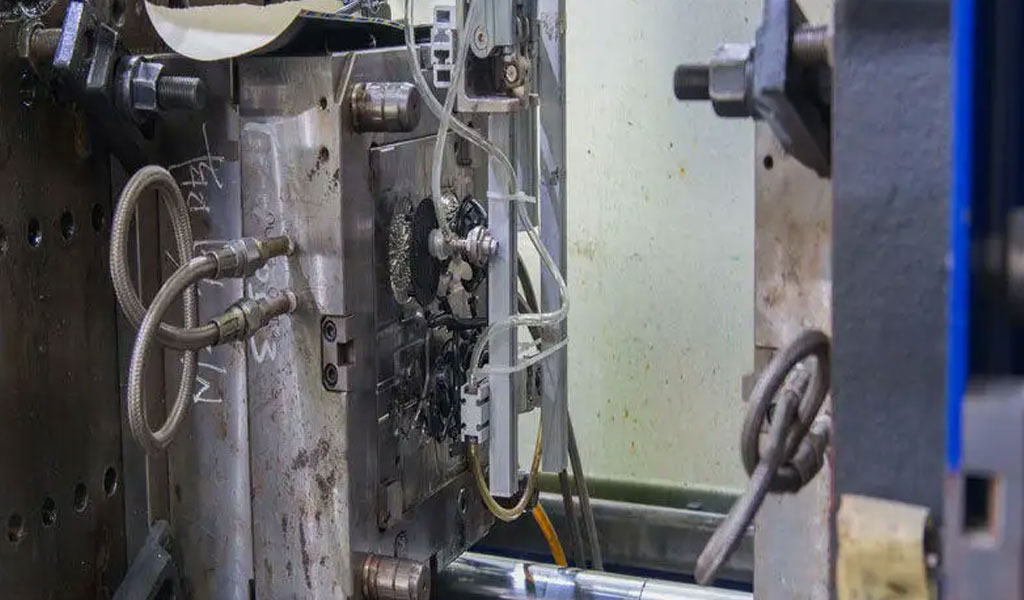
Material Costs
Material costs refer to the expenses associated with the raw materials used in the injection molding process. These costs include:
- Resin Cost: The cost of the base plastic resin or other materials used to form the part. Different resins have varying prices, influenced by factors such as type, grade, and market conditions. Common plastic resins include polyethylene (PE), polypropylene (PP), polystyrene (PS), and high-performance polymers like polyetheretherketone (PEEK).
- Additives: Additional materials such as colorants, fillers, stabilizers, and impact modifiers that enhance the properties of the resin or achieve specific performance characteristics. Additives can significantly impact material costs, depending on the type and quantity used.
- Material Waste: The cost of material lost during the molding process, including sprues, runners, and defective parts. Efficient material management and recycling can help minimize waste and reduce overall material costs.
- Recycled Material: Costs associated with using recycled plastic materials, which can be lower than virgin resins but may require additional processing or blending to meet quality standards.
Calculating Material Costs:
To calculate material costs, the following formula can be used:
Material Cost per Part=Part Weight×Material Price per Unit Weight
For example, if a part weighs 0.05 kg and the material costs $4 per kg, the material cost per part would be:
Material Cost per Part=0.05kg×4$/kg=0.20$
Processing Costs
Processing costs encompass the expenses associated with the operation of the injection molding machine and the production of parts. These costs include:
- Machine Time: The cost of operating the injection molding machine, which is typically calculated based on the machine’s hourly rate. This rate includes energy consumption, machine wear and tear, and other operational expenses.
- Cycle Time: The time required to complete one cycle of the injection molding process, including injection, cooling, and ejection. Cycle time directly affects the production rate and the overall processing cost. Shorter cycle times generally reduce processing costs but may require more advanced technology or materials.
- Labor Costs: The wages of the personnel involved in the injection molding process, including machine operators, quality control inspectors, and maintenance staff. Labor costs can vary based on the level of automation and the complexity of the operation.
- Energy Consumption: The cost of energy required to run the injection molding machine, including electricity for heating, cooling, and machine operation. Energy-efficient machines and processes can help reduce energy consumption and lower processing costs.
- Maintenance Costs: Expenses related to the regular maintenance and repair of the injection molding machine, including scheduled maintenance, parts replacement, and repairs. Preventive maintenance can help minimize unplanned downtime and associated costs.
Calculating Processing Costs:
The processing cost per part can be calculated using the formula:
Processing Cost per Part=Machine Hourly Rate×Cycle Time/Number of Cavities
For example, if the machine hourly rate is $80, the cycle time is 25 seconds, and the mold has 4 cavities, the processing cost per part would be:
Processing Cost per Part={80×(25/3600)}/4=0.14$
Injection Mold Tooling Costs
Tooling costs are the expenses associated with designing, fabricating, and maintaining the molds used in the injection molding process. These costs are a significant portion of the overall injection molding expenses and include:
- Mold Design: The cost of designing the mold, which includes engineering time, CAD software, and design validation. Complex part geometries, multiple cavities, and intricate features can increase design costs.
- Mold Fabrication: The cost of manufacturing the mold, including the machining of mold components, assembly, and fitting. Mold fabrication typically involves processes such as CNC machining, electrical discharge machining (EDM), and surface finishing.
- Mold Material: The cost of the material used to construct the mold, which is usually high-grade steel or aluminum. Steel molds are more durable but more expensive, while aluminum molds are less costly but have a shorter lifespan.
- Testing and Validation: The cost of testing the mold to ensure it produces parts to the required specifications. This includes trial runs, adjustments, and any necessary modifications to achieve the desired part quality.
- Mold Maintenance: Ongoing costs related to maintaining and repairing the mold to ensure its longevity and consistent performance. Regular maintenance can help prevent issues such as wear, damage, and part defects.
Calculating Tooling Costs:
The total tooling cost can be estimated by summing the costs of design, material, fabrication, assembly, and testing. For example, if the design costs are $6,000, material costs are $8,000, fabrication costs are $12,000, assembly and fitting costs are $3,000, and testing costs are $2,000, the total tooling cost would be:
Total Tooling Cost=6,000+8,000+12,000+3,000+2,000=31,000$
Cost Considerations and Optimization
- Production Volume Impact:The production volume plays a crucial role in determining the per-part cost of injection molding. High production volumes generally lead to lower per-part costs, as the fixed costs of tooling and setup are distributed over a larger number of parts. Conversely, low production volumes can result in higher per-part costs due to the amortization of tooling expenses over fewer parts.
- Design for Manufacturability : Designing parts with manufacturability in mind can help reduce both tooling and processing costs. Simplifying part geometry, minimizing the number of undercuts, and optimizing mold design can lead to more efficient production and lower costs.
- Material and Process Selection : Selecting the appropriate material and optimizing processing conditions can impact both material and processing costs. Using materials that are cost-effective for the application and optimizing cycle times can help reduce overall expenses.
- Tooling and Equipment Investment Investing in high-quality tooling and equipment can lead to long-term cost savings by reducing maintenance needs, improving production efficiency, and extending the lifespan of the molds.
- Cost Analysis and Budgeting : Conducting a thorough cost analysis and budgeting for injection molding projects is essential for managing expenses and ensuring profitability. By understanding the various cost components and their impact on overall expenses, manufacturers can make informed decisions and optimize their injection molding processes.
Understanding the types of costs involved in injection molding—material costs, processing costs, and tooling costs—is essential for effective cost management and optimization. By considering factors such as material selection, part design, production volume, and equipment investment, manufacturers can make informed decisions that enhance efficiency, reduce expenses, and maximize profitability. Careful planning and cost analysis are key to successful injection molding projects and achieving high-quality, cost-effective production outcomes.
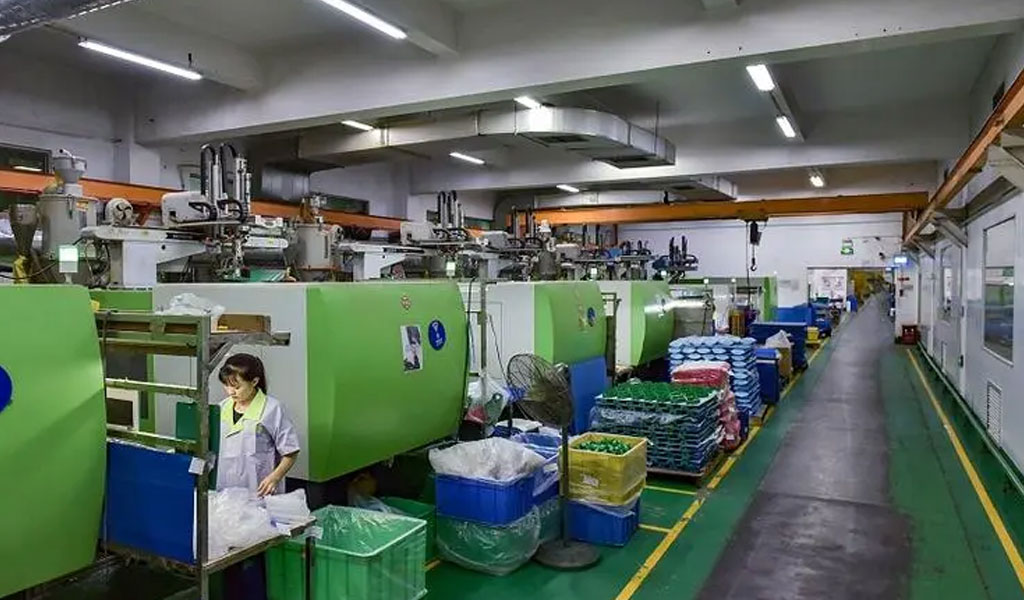
Calculation Formula For Plastic Injection Mold Quotation
Injection molding, my dear reader, stands as one of the foremost methods for crafting plastics. It is a process renowned for its ability to produce identical parts in large quantities with remarkable precision. Indeed, it is a marvel of modern manufacturing—a method both economical and reliable, yielding parts of the finest quality when produced in large numbers.Click the link to view our: Plastic Injection Mold Quoted Price Cost Analysis Form
This process is swift and vigorous, involving the application of intense heat and pressure to inject molten material into a mold. The choice of material depends on the specific needs of the manufacturing endeavor. While thermoplastics such as ABS, PS, PE, PC, PP, or TPU are most commonly employed, the method is versatile enough to accommodate metals and ceramics as well. The mold itself is a carefully crafted cavity, designed to mirror the final features of the part to be produced with the utmost accuracy.
The primary expense in injection molding lies in the creation of the mold, commonly referred to as the tooling cost. The price of designing and constructing a mold is influenced by several factors: the intended production volume, the complexity of the part, the material of the mold, and the method used to create it.
For simpler, low-volume projects, a 3D printed mold might be acquired for as little as $100. However, for more complex molds intended for high-volume production, the cost can soar to $100,000. Despite these substantial initial investments, injection molding proves cost-effective in the long run. The process benefits from low variable costs, thanks to the affordability of thermoplastics, the rapid cycle times, and the decreasing labor requirements brought about by automation and economies of scale. As production volumes increase, the cost per part diminishes, making the process increasingly efficient.
Quick Mould Price Calculation Method
Mould Price Calculation:
Experience Calculation Method:Mould Price = Material Cost + Design Fee + Processing Fee & Profit + VAT + Trial Fee + Packaging & Transportation Fee
The proportions for each component are generally as follows:
- Material Cost: Materials and standard parts account for 15%-30% of the total mould cost.
- Processing Fee & Profit: 30%-50%.
- Design Fee: 10%-15% of the total mould cost.
- Trial Fee: For large and medium-sized moulds, it can be controlled within 3%; for small precision moulds, within 5%.
- Packaging & Transportation Fee: Calculated based on actual cost or estimated at 3%.
- VAT: 17%.
Material Coefficient Method:Based on mould dimensions and material price, the mould material cost can be calculated.
Mould Price = (6~10) × Material Cost
Forging Mould, Plastic Mould = 6 × Material Cost
Die-Casting Mould = 10 × Material Cost
Mould Quotation Estimation:
- First, review the customer’s requirements, as these determine material selection and heat treatment processes.
- Choose the appropriate material, draft a preliminary mould design, and calculate the mould weight (including the price of mould core material and mould frame material) and the cost of heat treatment (all based on rough material weight).
- Processing Cost: Based on the complexity of the mould core, the processing cost is generally 1.5~3:1 compared to the mould core material price. For the mould frame, the processing cost is generally 1:1.
- Risk Cost: 10% of the total cost above.
- Tax.
- Design Fee: 10% of the total mould price.
Mould Quotation Strategy and Settlement Method:
The quotation and settlement of moulds are a continuation and result of mould valuation. From mould valuation to mould quotation is just the first step. The final goal is to determine the settlement price after the mould is delivered and used. In practice, these four prices—mould valuation, mould price, and settlement price—are not always equal, and fluctuations may occur. This is the issue to be discussed below.
After mould valuation, it must be appropriately processed and organized into a quotation for signing a mould processing contract. Through repeated negotiations, both parties agree on the mould price, and a contract is signed to officially start mould processing.
1. Mould Valuation and Quotation, Quotation, and Mould Price:
After mould valuation, it cannot be directly used as a quotation. Generally, market conditions, customer psychology, competitors, and other factors need to be comprehensively analyzed. The initial quotation is usually 10-30% higher than the valuation. After bargaining, the price may be adjusted downward based on actual conditions. However, if the negotiated price is 10% lower than the valuation, the mould needs to be refined and re-evaluated to ensure that the contract is signed under profitable conditions. The mould price is the price mutually agreed upon and signed in the contract.
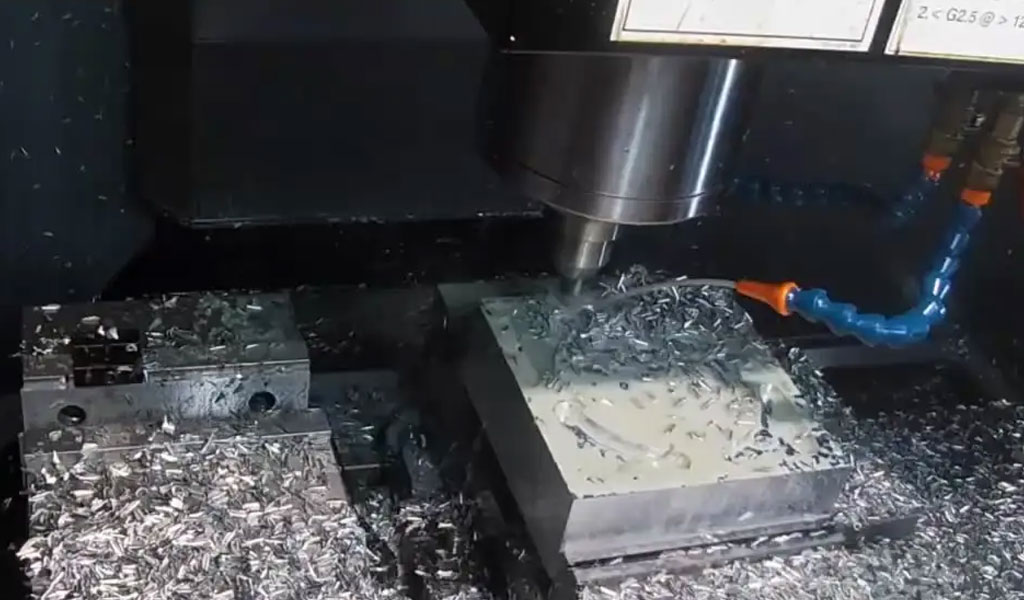
This final mould price may be higher or lower than the valuation. If the negotiated price is lower than the cost price, the mould requirements, conditions, and design plan may need to be adjusted to lower the mould cost. It’s important to note that moulds are highly specialized products with significant technological content and should not be sold at low prices or even at a loss to cater to customers. Quality, precision, and longevity should be prioritized, rather than focusing too heavily on price. Chasing low prices can lead to compromises in quality, precision, and lifespan. Low prices are generally not typical in the mould industry. However, if the mould manufacturing and product development are part of the same financial unit or have economic ties, the mould price should be based on its cost price.
Mould valuation only estimates the basic cost, excluding other cost factors and profits. In future product production, the profit margin can be used to cover the mould fee. However, this early quotation is not the final mould price; it is merely the initial development cost. If the product is successfully developed and profits are generated, the additional mould fee will be reimbursed to the mould manufacturing unit, and the final mould price will be determined. This final price may be much higher than the initial mould price, with the return rate potentially reaching several dozen or even hundreds of times the original price. Of course, the return rate could also be zero.
2. Regional and Time Differences in Mould Prices:
Mould valuation and pricing vary across different companies, regions, and countries, and even over different periods and environments. These differences arise due to varying manufacturing conditions, equipment, technology, personnel perspectives, and consumption levels, leading to different mould cost estimates and profit targets. Consequently, mould prices differ accordingly. Generally, in more developed areas or where technology is advanced and equipment is modern, larger mould enterprises aim for high quality and high prices. In contrast, in regions with lower consumption levels or smaller mould companies with lower technological content and equipment investment, the estimated mould price is relatively lower.
Mould prices also have time-related differences. The price of a mould at different times can vary, and different manufacturing cycles can result in different prices.
3. Filling Out the Mould Quotation Sheet:
After estimating the mould price, it is usually presented in the form of a quotation. The main contents of the quotation sheet include mould price, cycle, required mould life (number of uses), technical requirements, payment method, settlement method, warranty period, and so on.
A correct quotation strategy directly affects the mould price, mould profit, and the level of production technology management, and is a key factor in the success of a mould enterprise.
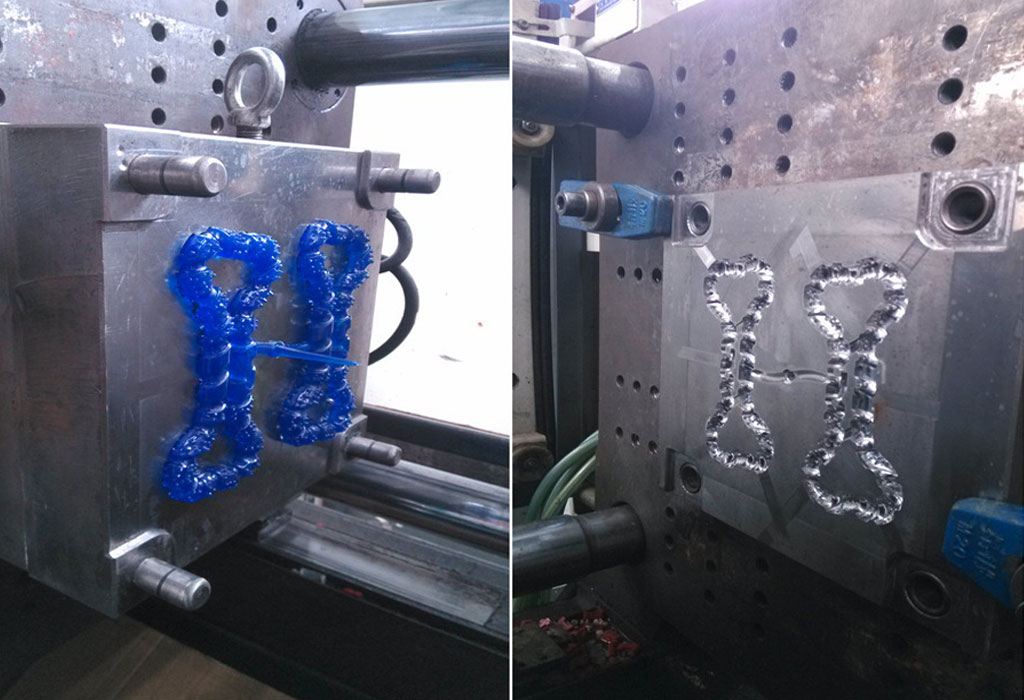
4. Mould Settlement Method:
The settlement of the mould price is the ultimate goal of mould design and manufacturing. The final settlement price is the actual mould price.
The settlement process begins with mould design and manufacturing and accompanies every step, with each design and manufacturing stage corresponding to a specific settlement method. The settlement process concludes once the design and manufacturing are complete and the mould is delivered and used, although it may sometimes continue for a while longer. All technical quality issues ultimately translate into economic settlements. Thus, the economic settlement is a validation and recognition of all technical and quality aspects of the design and manufacturing.
The settlement method starts with the mould quotation and runs in parallel with the start of mould design and manufacturing upon the contract signing. The different settlement methods reflect the differences in mould design and manufacturing.
Settlement methods vary across regions and companies, but as the market economy matures, certain standards and conventions have developed. Common settlement methods include:
(1) “50-50” Settlement:
50% of the mould price is prepaid upon contract signing, with the remaining 50% paid after the mould is trialled and accepted.
This method was popular in the early days of the mould industry, with the following pros and cons:
- The 50% prepayment usually doesn’t cover the basic manufacturing cost, requiring additional investment from the manufacturer, which involves some risk.
- The final payment is made upon trial acceptance, which separates the warranty cost from the settlement.
Large final payments may lead to delayed settlement since the mould is mostly complete.
If the mould fails, the initial 50% prepayment is usually refunded.
(2) “60-40” Settlement:
- 60% of the mould price is prepaid upon contract signing, with the remaining 40% paid after the mould is trialled and accepted.
- This method is similar to the “50-50” settlement but offers slightly more financial protection to the manufacturer.
(3) “30-40-30” Settlement:
- 30% of the mould price is prepaid upon contract signing as a deposit.
- 40% is paid after the design review, materials are in place, and processing begins.
- The remaining 30% is paid after the mould is accepted and used for a few days.
- This method is currently quite popular and aligns the settlement process closely with the design, manufacturing, and usage phases.
- If the mould fails, the manufacturer must refund the entire prepayment and may be liable for compensation, typically 1-2 times the deposit.
(4) Payment from Production Profits:
- The mould user pays only a small portion of the cost upfront (or none at all), with the remaining cost covered by extracting a portion of the profits from each product produced using the mould.
- This method closely ties the mould manufacturer and user, linking investment risk and usage benefits, technology and economics, quality and production efficiency. It maximizes the value and risk associated with the mould. Although this method presents a higher risk for the manufacturer, the potential returns are significant.
Various settlement methods exist, but they all aim to combine technical and economic factors to maximize mutual benefits. The goal is to align mould prices with international standards, focusing on producing high-quality, precision moulds to achieve the best possible economic outcomes. This is the ultimate objective of mould design, manufacturing, and usage.
Estimate Injection Molding Mould Cost
Calculating the cost of an injection molding mold involves evaluating several factors that contribute to the overall expense. These factors include design complexity, mold material, manufacturing processes, and production requirements.
Understanding and accurately estimating these costs are crucial for budgeting and ensuring profitability in injection molding projects.
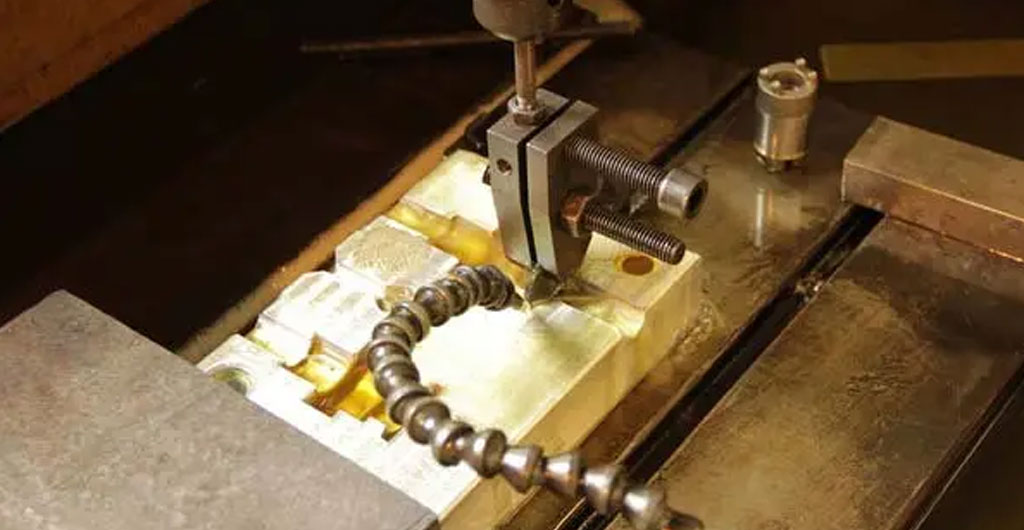
1. Understanding the Cost Components
The total cost of an injection molding mold can be broken down into several key components:
- Design Costs: Expenses related to the initial mold design, including engineering and CAD modeling.
- Material Costs: Costs of the raw materials used to fabricate the mold, such as steel or aluminum.
- Manufacturing Costs: Expenses associated with machining, assembly, and fitting of the mold.
- Testing and Validation Costs: Costs incurred during mold testing, trial runs, and adjustments to meet specifications.
- Maintenance and Repair Costs: Ongoing costs related to the maintenance and repair of the mold throughout its lifespan.
2. Calculating Design Costs
Design Complexity: The complexity of the mold design affects the cost. Complex designs with intricate features, multiple cavities, and advanced cooling systems require more engineering time and expertise.
Design Costs Formula:
Design Cost=Engineering Hours×Hourly Rate
For example, if the design requires 40 hours of engineering time at an hourly rate of $100, the design cost would be:
Design Cost=40×100=4,000$
3. Estimating Material Costs
Mold Material: The choice of material for the mold base, such as steel or aluminum, impacts the cost. Steel molds are more durable and suitable for high-volume production but are more expensive than aluminum molds.
Material Costs Formula:
Material Cost=Volume of Mold×Material Price per Unit Volume
For example, if the mold material volume is 0.5 cubic meters and the price per cubic meter of steel is $10,000, the material cost would be:
Material Cost=0.5×10,000=5,000$
4. Calculating Manufacturing Costs
Machining Complexity: The complexity of machining processes, such as CNC milling, EDM, and surface finishing, affects the cost. More intricate machining requires more time and specialized equipment.
Machining Costs Formula:
Machining Cost=Machining Hours×Hourly Rate
For example, if machining takes 80 hours at an hourly rate of $75, the machining cost would be:
Machining Cost=80×75=6,000$
Assembly and Fitting: Costs associated with assembling and fitting mold components to ensure proper alignment and functionality.
Assembly Costs Formula:
Assembly Cost=Assembly Hours×Hourly Rate
For example, if assembly requires 20 hours at an hourly rate of $50, the assembly cost would be:
Assembly Cost=20×50=1,000$
5. Estimating Testing and Validation Costs
Testing Costs: Includes expenses for trial runs, adjustments, and quality checks to ensure the mold produces parts that meet specifications.
Testing Costs Formula:
Testing Cost=Testing Hours×Hourly Rate+Material Costs for Trials
For example, if testing takes 10 hours at an hourly rate of $60 and trial materials cost $500, the testing cost would be:
Testing Cost=(10×60)+500=600+500=1,100$
6. Calculating Maintenance and Repair Costs
Maintenance Costs: Regular maintenance to ensure the mold’s optimal performance and longevity.
Repair Costs: Costs associated with repairing the mold due to wear, damage, or operational issues.
Maintenance and Repair Costs Formula:
Annual Maintenance Cost=Estimated Maintenance Hours per Year×Hourly Rate
For example, if annual maintenance requires 15 hours at an hourly rate of $40, the annual maintenance cost would be:
Annual Maintenance Cost=15×40=600$
Repair Costs: Repair costs are variable and depend on the extent of damage and required repairs.
7. Total Mold Cost Calculation
To calculate the total mold cost, sum all the cost components:
Total Mold Cost=Design Cost+Material Cost+Machining Cost+Assembly Cost+Testing Cost+Annual Maintenance Cost
For example:
- Design Cost: $4,000
- Material Cost: $5,000
- Machining Cost: $6,000
- Assembly Cost: $1,000
- Testing Cost: $1,100
- Annual Maintenance Cost: $600
Total Mold Cost=4,000+5,000+6,000+1,000+1,100+600=17,700$
8. Additional Considerations
- Production Volume: Higher production volumes can justify higher initial mold costs by reducing the per-part cost over a larger number of parts.
- Lead Time: Shorter lead times may require expedited processes, which can increase mold costs. Conversely, longer lead times may offer cost savings but can impact production schedules.
- Customization and Special Features: Custom features such as advanced cooling systems, hot runners, or special coatings can add to the mold cost.
Calculating injection molding mold costs involves assessing various factors, including design complexity, material selection, manufacturing processes, testing, and maintenance. By understanding and accurately estimating these costs, manufacturers can effectively manage budgets and ensure cost-efficient production. Detailed planning and analysis are essential for optimizing mold costs and achieving successful injection molding outcomes.

How to Reduce Injection Molding Costs
Injection molding is a widely used manufacturing process for producing large volumes of plastic parts with high precision. However, the costs associated with injection molding can be significant, particularly when producing complex or high-volume parts. Reducing these costs is crucial for manufacturers looking to improve profitability and remain competitive. Below are strategies and best practices for reducing injection molding costs without compromising the quality of the final product.
1. Optimize Part Design
- Simplify Geometry: Simplifying the part design by reducing complexity can significantly lower mold manufacturing costs. Eliminate unnecessary features, undercuts, and complex geometries that require additional tooling and machining.
- Design for Manufacturability (DFM): Implementing DFM principles ensures that the part design is optimized for the injection molding process. This includes designing parts with uniform wall thickness, avoiding sharp corners, and incorporating draft angles to facilitate easy ejection from the mold.
- Reduce Part Size: Smaller parts generally require less material and shorter cycle times, leading to lower costs. Evaluate whether the part size can be reduced without affecting its functionality.
- Consolidate Parts: Combining multiple components into a single molded part can reduce assembly costs and eliminate the need for additional molds and production steps.
2. Material Selection
- Choose Cost-Effective Materials: Selecting the right material is crucial for balancing performance and cost. Use cost-effective materials that meet the functional requirements of the part without over-engineering. For example, choose commodity plastics like polypropylene or polyethylene over high-performance engineering resins if the application allows.
- Minimize Material Waste: Efficiently managing material usage can reduce costs. Design parts to minimize sprue and runner sizes, and consider using hot runner systems to reduce waste. Recycle scrap material where possible.
- Use Recycled or Regrind Materials: Incorporating recycled or regrind materials into the production process can reduce raw material costs. However, ensure that the quality of the final product is not compromised.
3. Optimize Mold Design
- Use Multi-Cavity Molds: Multi-cavity molds can produce several parts per cycle, reducing the overall production time and cost per part. However, the initial mold cost will be higher, so this approach is more beneficial for high-volume production.
- Consider Family Molds: Family molds, which produce different parts in a single mold, can reduce tooling costs when producing multiple components of an assembly.
- Optimize Cooling Channels: Efficient cooling channel design can significantly reduce cycle times. Using conformal cooling channels, which follow the contours of the part, can improve cooling efficiency and reduce cycle times.
- Choose the Right Mold Material: The choice of mold material impacts both the initial cost and the longevity of the mold. For high-volume production, investing in durable steel molds can reduce long-term costs. For low-volume or prototype production, aluminum molds may be a more cost-effective option.
4. Improve Process Efficiency
- Reduce Cycle Time: Cycle time is one of the most critical factors affecting injection molding costs. Optimizing the injection speed, cooling time, and ejection process can reduce cycle times and increase production efficiency.
- Automate Where Possible: Implementing automation in the injection molding process can reduce labor costs and improve consistency. Automated part handling, quality inspection, and packaging can streamline production and reduce overall costs.
- Optimize Machine Utilization: Ensuring that machines are running at optimal capacity can reduce idle time and increase productivity. Scheduling production runs efficiently and performing regular maintenance to minimize downtime can help achieve this.
- Implement Process Monitoring and Control: Using advanced process monitoring and control systems can help maintain consistent quality and reduce scrap rates. Real-time data can be used to adjust parameters and prevent defects, leading to cost savings.
5. Reduce Tooling Costs
- Simplify Mold Construction: Reducing the number of components and simplifying the mold design can lower tooling costs. Standardizing mold components and using modular designs can also reduce costs.
- Use Prototype or Bridge Tooling: For low-volume production or prototyping, consider using less expensive prototype or bridge tooling. These tools are typically made from softer materials like aluminum and are faster and cheaper to produce than production molds.
- Consider Outsourcing: Outsourcing mold manufacturing to regions with lower labor costs can reduce tooling expenses. However, ensure that the quality and lead time meet your requirements.
- Negotiate with Suppliers: Building long-term relationships with mold manufacturers and negotiating bulk orders can lead to cost reductions. Consider partnering with suppliers who offer value-added services like design support and maintenance.
6. Reduce Secondary Operations
- Eliminate or Minimize Post-Molding Operations: Reducing the need for secondary operations, such as trimming, painting, or assembly, can lower costs. Design parts that come out of the mold with minimal need for additional processing.
- Use In-Mold Decoration or Labeling: In-mold decoration (IMD) or in-mold labeling (IML) can eliminate the need for post-molding printing or labeling, reducing labor and material costs.
- Streamline Assembly Processes: If assembly is required, design parts for easy assembly. Snap-fit designs, for example, can eliminate the need for screws or adhesives, reducing assembly time and costs.
7. Optimize Production Volume
- Balance Volume with Mold Cost: High-volume production justifies the cost of more expensive, durable molds. Conversely, for low-volume production, consider using less expensive molds to avoid over-investing in tooling.
- Use Batch Production: For smaller production runs, batch production can reduce setup and changeover costs. Grouping similar parts into a single production run can improve efficiency.
- Plan for Scalability: Design molds and processes with scalability in mind. This allows for cost-effective expansion of production as demand increases, without the need for significant retooling.
8. Evaluate Supply Chain and Logistics
- Source Locally: Sourcing materials and molds locally can reduce shipping costs and lead times. It also allows for better communication and quality control with suppliers.
- Consolidate Suppliers: Working with a smaller number of reliable suppliers can lead to volume discounts and stronger partnerships, which can reduce overall costs.
- Optimize Inventory Management: Implementing just-in-time (JIT) inventory management can reduce storage costs and minimize the risk of holding obsolete materials or parts.
Reducing injection molding costs requires a comprehensive approach that considers every aspect of the production process—from part design and material selection to mold design and process efficiency. By focusing on these areas and implementing cost-saving strategies, manufacturers can significantly lower their injection molding expenses while maintaining or even improving the quality of their products. Regularly reviewing and optimizing these processes ensures that cost reductions are sustainable and that the production remains competitive in a dynamic market.
Get Started With Rapid Injection Molding
While injection molding is traditionally considered a manufacturing process only for mass production due to its high tooling costs, leveraging 3D printing to fabricate injection molds empower you to use this process to produce high-quality and repeatable parts for prototyping and low-volume production.
Use 3D printed injection molds with both benchtop and industrial machines to efficiently and affordably produce hundreds to thousands of functional prototypes, parts to accelerate product development, reduce costs and lead times, and bring better products to market.

The Detail Of BE-CU Plastic Injection Company

The core cooperative injection molding supplier has twelve 50T-200T injection molding machines, all of which are equipped with manipulators, mold temperature controllers, automatic assembly lines, and dust-free purification workshops. There are 4 automatic production lines in the oil spraying department: one 10,000-level automatic spraying production line (two sprays and two baking), 1 production line (one spray and one baking); 1 manual spraying production line, with a daily output of 150,000 pieces above. With brand-new professional technology, with an environmentally friendly anti-static, fully air-conditioned, dust-free workshop, the working environment is superior, the production equipment is complete, and the product testing equipment is perfect. Need mold making supplies for large quantities of production parts? Looking for a more cost effective and time efficient way of manufacturing parts? Don’t miss our injection molding services! At be-cu.com, we provide high quality and affordable injection molding for prototypes and production parts with quick turnaround times.
-

5 Axis CNC Machining Spiral Bevel Gear Mold
-
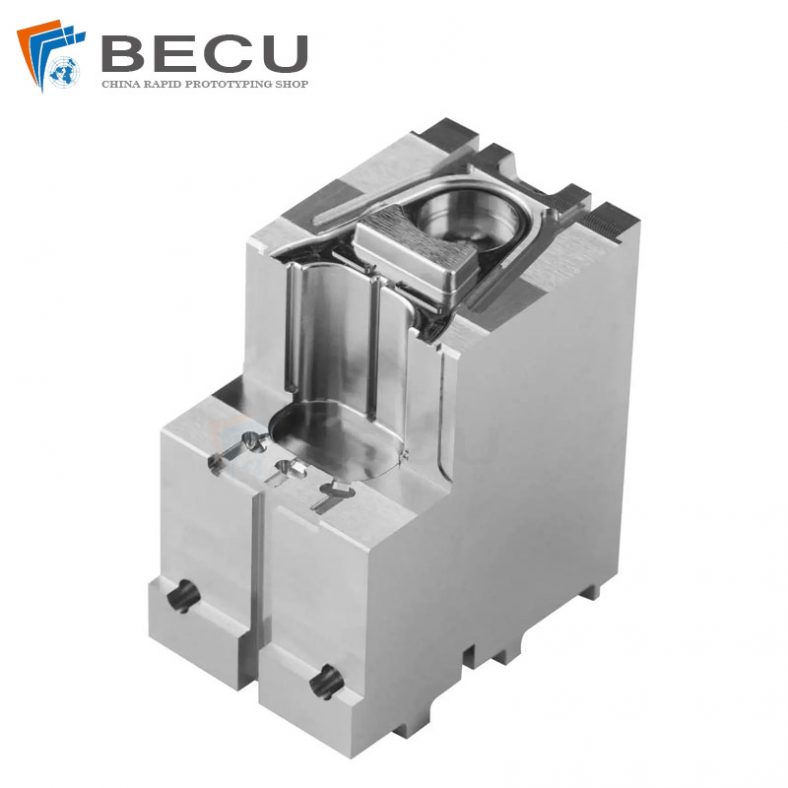
Small Precision Injection Molding Inserts
-
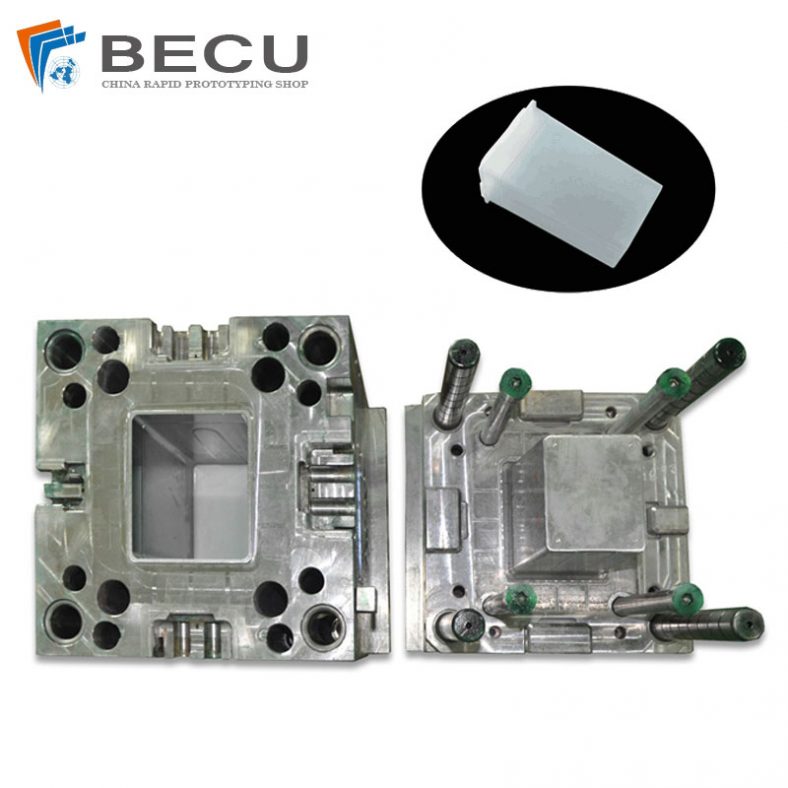
Plastic Storage Box Plastic Injection Mold
-
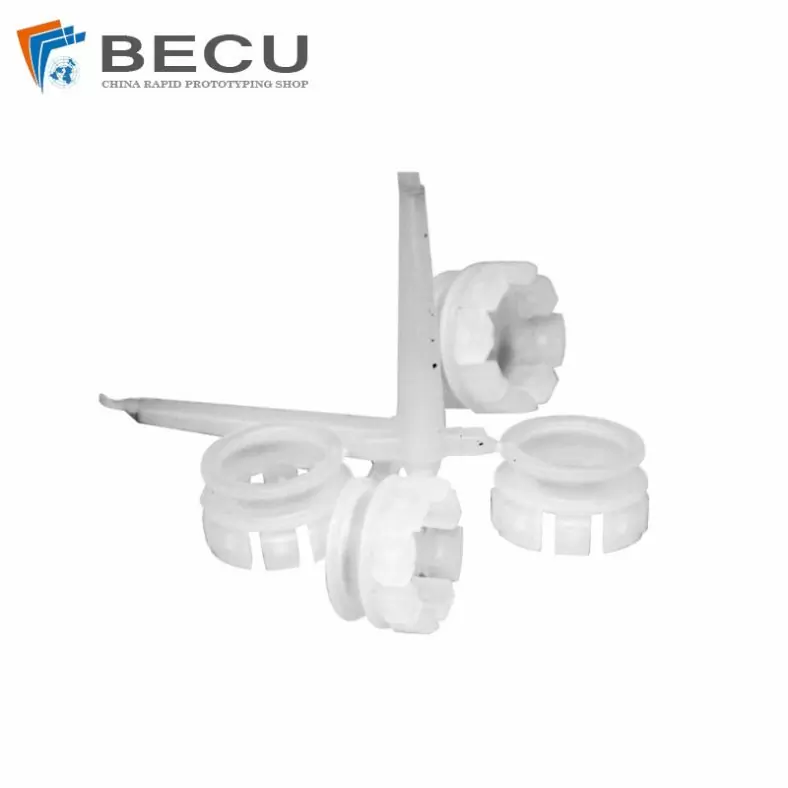
Injection Molding PE-UHMW Retaining Buckle And Ring
-
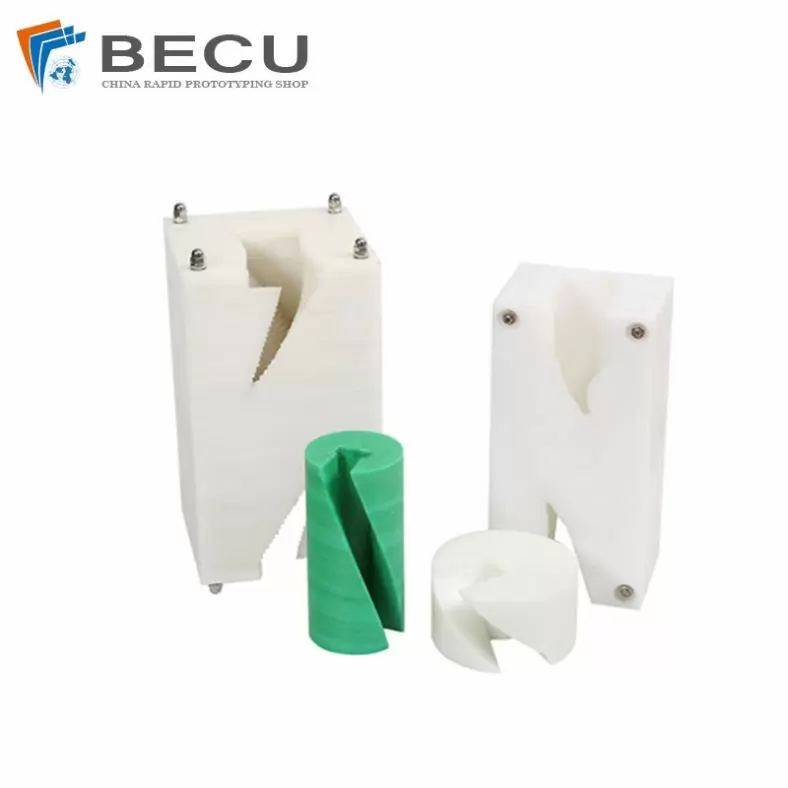
Cnc Machined UHMW-PE Bottle Turner
-
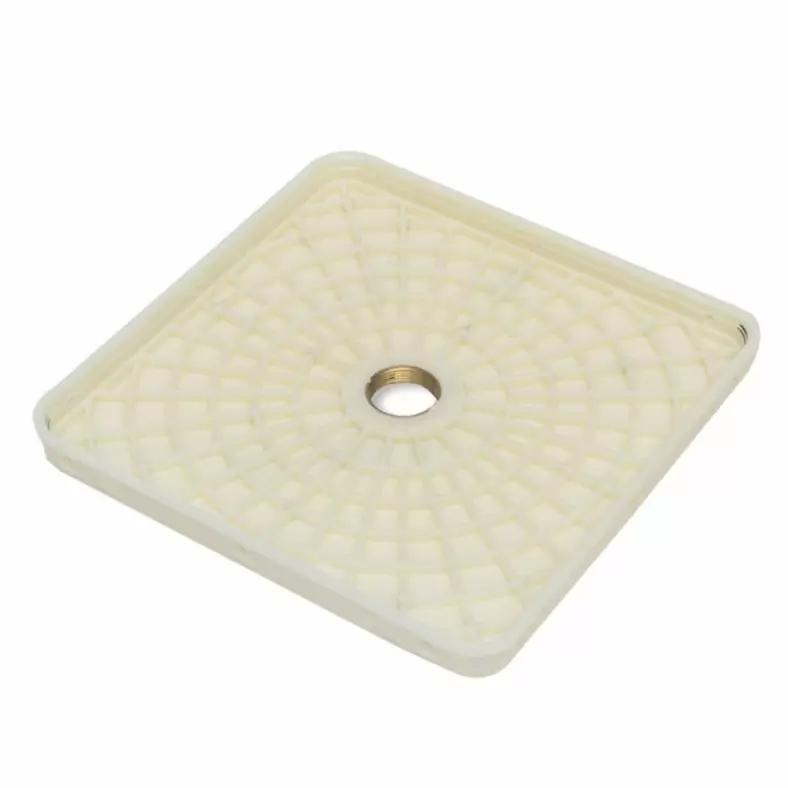
Shower Inclosure Sleeve By Plastic Injection
-
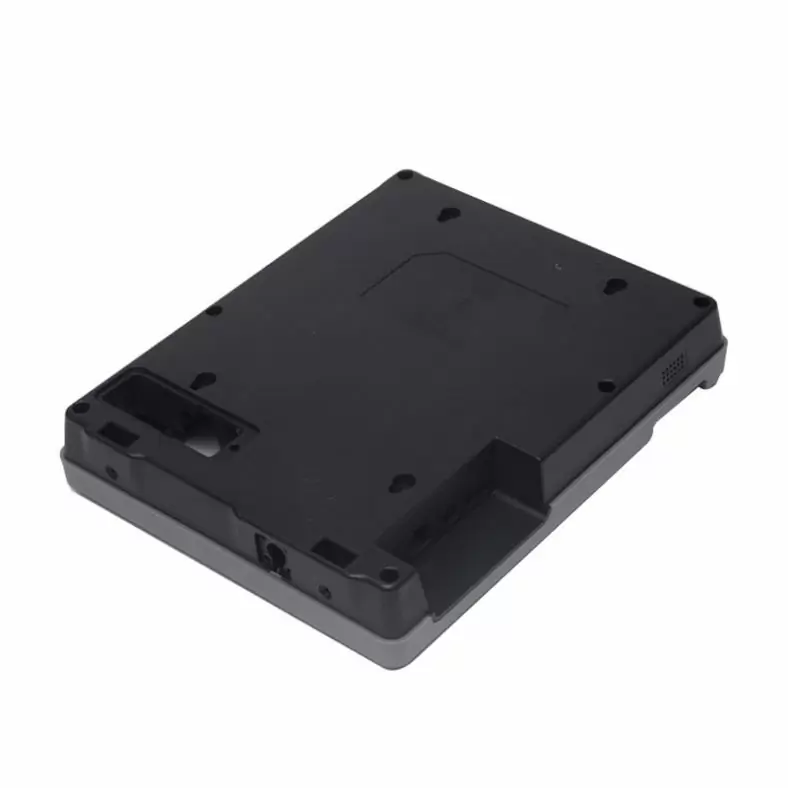
Injection Secret Security Machine Control Shell
-

Sewing Machine Industrial Control Shell By Plastic Injection
